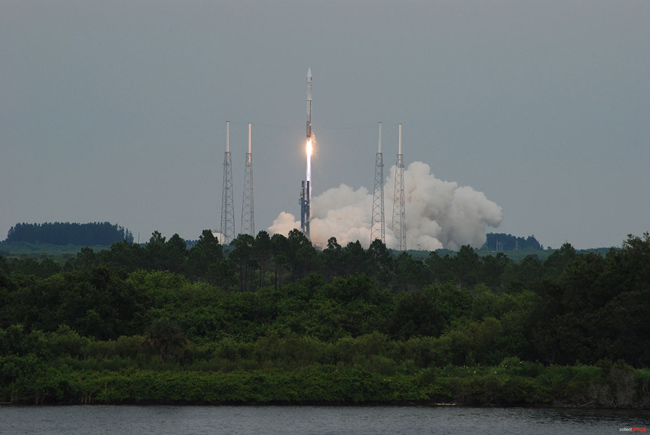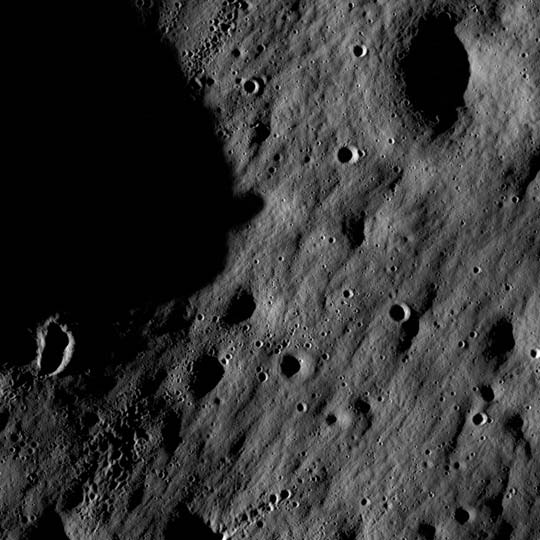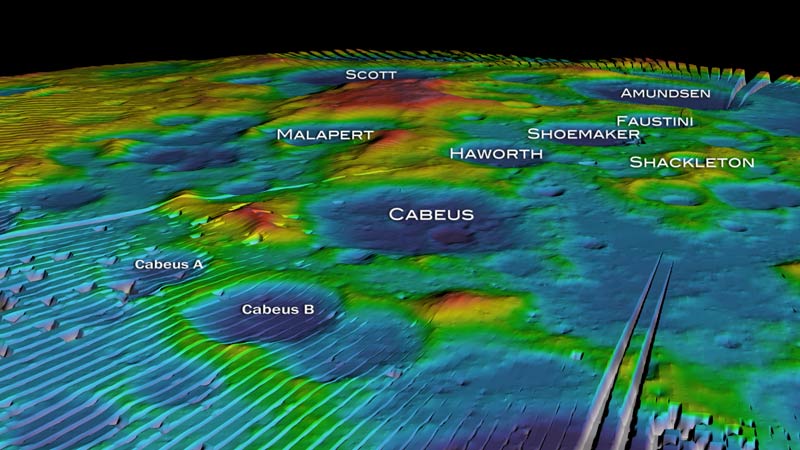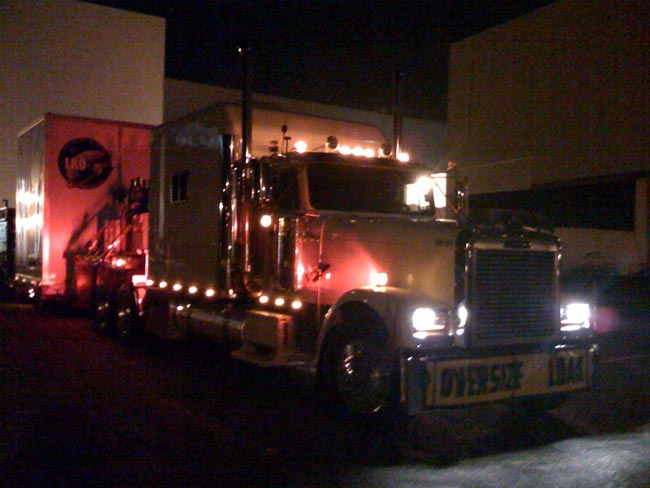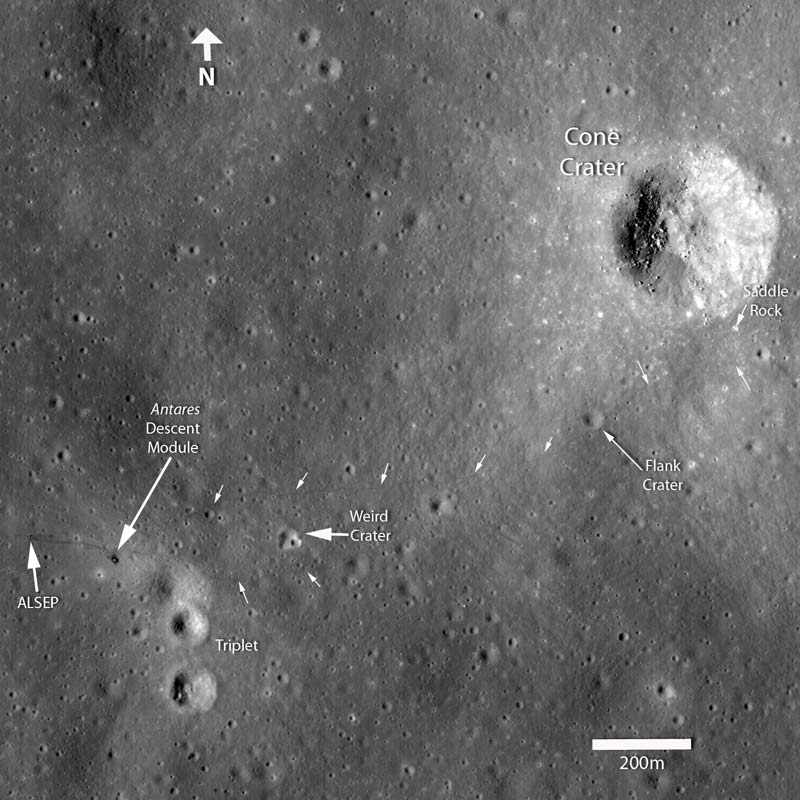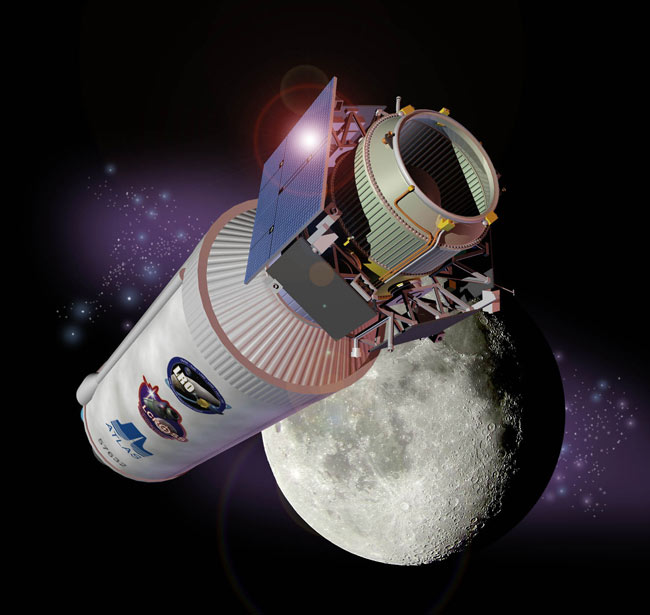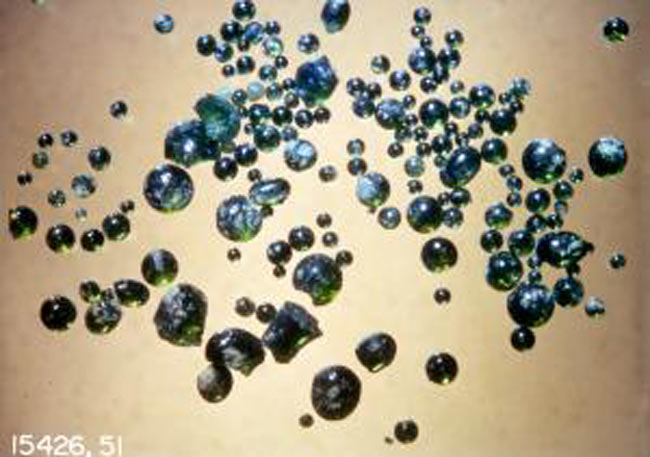Amazing Moon Photos from NASA's Lunar Reconnaissance Orbiter
Moon Zoo
Rocket Launches New U.S. Moon Probes
NASA's LRO and LCROSS moon probes blast off atop an Atlas 5 rocket in this June 18, 2009 image to begin NASA's lunar return. This image was taken as the ULA rocket launched from the Cape Canaveral Air Force Station in Florida.
Far Side of the Moon Explained
This graphic (not to scale) shows that the moon's crust is thickest on the central far side, and becomes thinner towards the north pole in a manner described with a simple math formula. The highlands appear to have formed early in the moon's history, when a magma ocean, shaped by tides caused by Earth's gravity, heated the moon's floating crust non-uniformly. Since then, the magma ocean has solidified.
New Moon Orbiter Sends First Lunar Snapshots
Cratered regions near the moon's Mare Nubium region, as photographed by the Lunar Reconnaissance Orbiter's LROC instrument, in a region 1,400 meters (0.87 miles) wide.
LRO
Moon’s South Pole Gets Close-Up in Restored Photos
Lunar Orbiter IV took this photo of the moon's south pole in May of 1967. It has been digitized and restored through the Lunar Orbiter Image Recovery Project. For more images like this one, please visit the project's Web site,
Two NASA Moon Probes Head to Launch Site
The truck that is driving LRO to Florida left the Goddard Space Flight Center before dawn to avoid as much traffic as possible.
New Moon Photo Reveals Tracks from Tough Apollo Moonwalk
This annotated figure shows the positions of various landmarks surrounding the Apollo 14 landing site on the moon's Fra Mauro highlands as seen by the LRO spacecraft. The small white arrows highlight locations where the astronauts' path can be clearly seen.
Water on the Moon?
Artist's rendition of Centaur upper stage rocket approaching the moon with the Lunar CRater Observation and Sensing Satellite (LCROSS), "shepherding satellite," attached.
Breaking space news, the latest updates on rocket launches, skywatching events and more!
Water Discovered in Moon Samples
Researchers led by Brown geologist Alberto Saal analyzed lunar volcanic glasses, such these gathered by the Apollo 15 mission, and used a new analytic technique to detect water. The discovery strongly suggests that water has been a part of the Moon since its early existence – and perhaps since it was first created.

Space.com is the premier source of space exploration, innovation and astronomy news, chronicling (and celebrating) humanity's ongoing expansion across the final frontier. Originally founded in 1999, Space.com is, and always has been, the passion of writers and editors who are space fans and also trained journalists. Our current news team consists of Editor-in-Chief Tariq Malik; Editor Hanneke Weitering, Senior Space Writer Mike Wall; Senior Writer Meghan Bartels; Senior Writer Chelsea Gohd, Senior Writer Tereza Pultarova and Staff Writer Alexander Cox, focusing on e-commerce. Senior Producer Steve Spaleta oversees our space videos, with Diana Whitcroft as our Social Media Editor.

